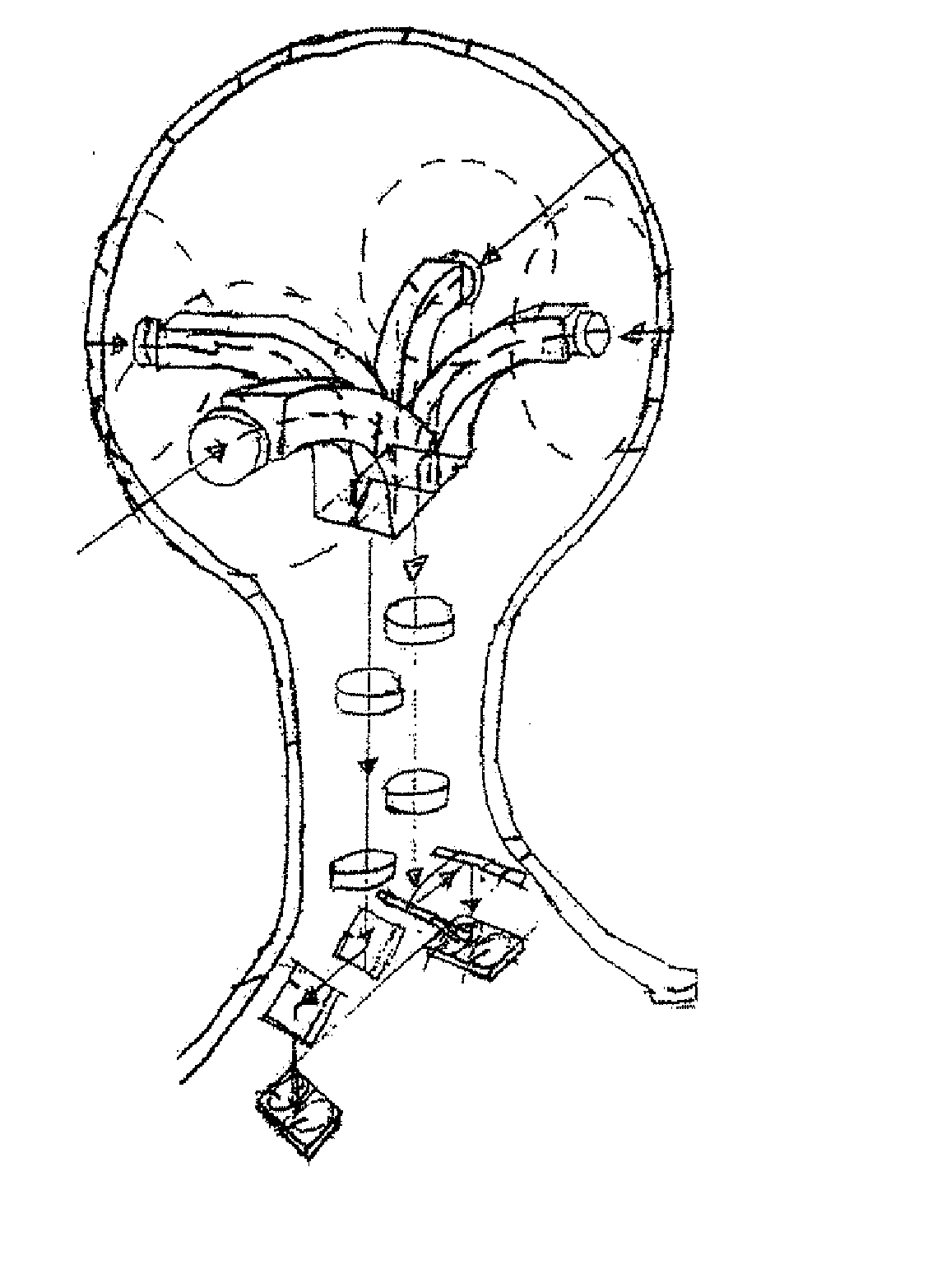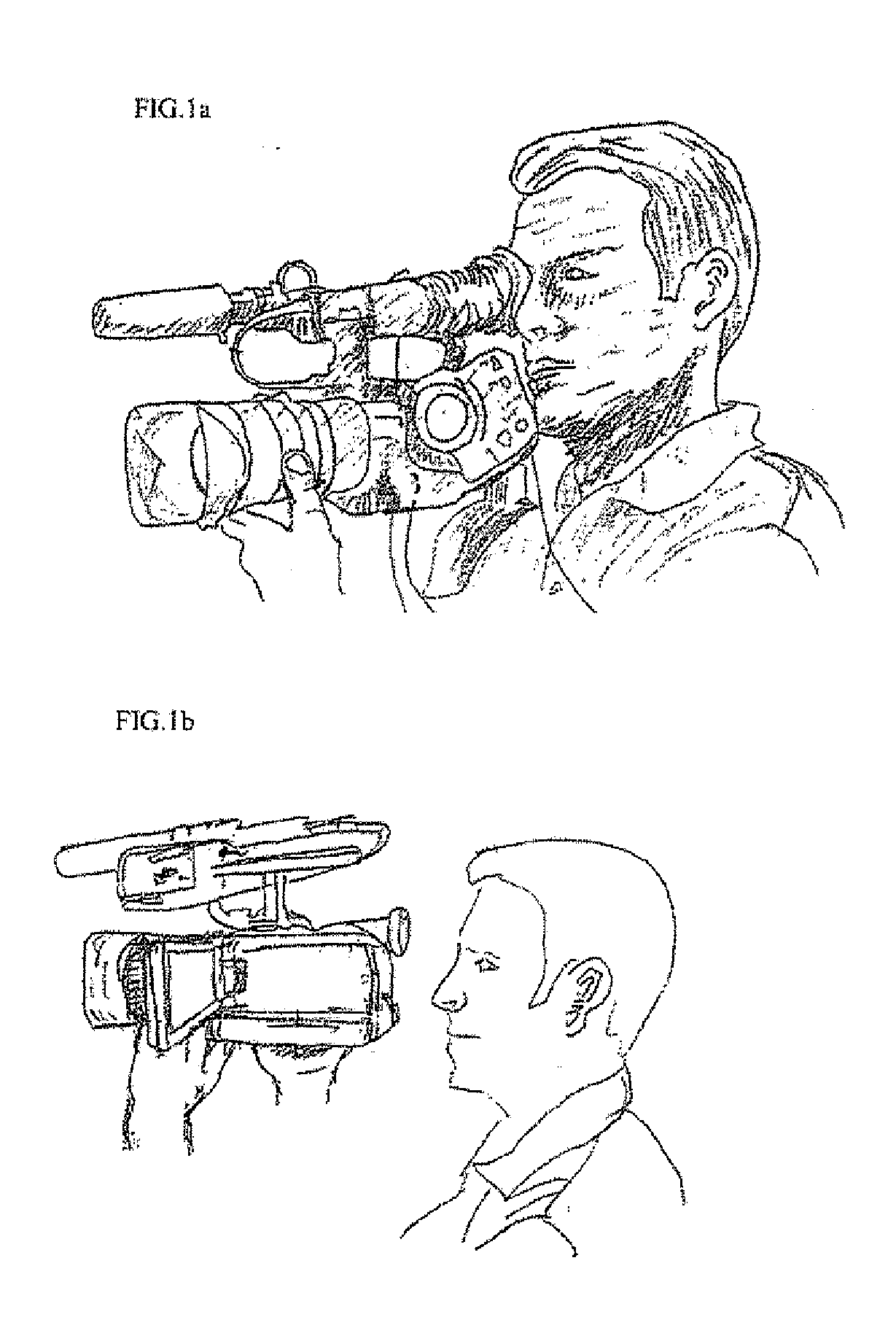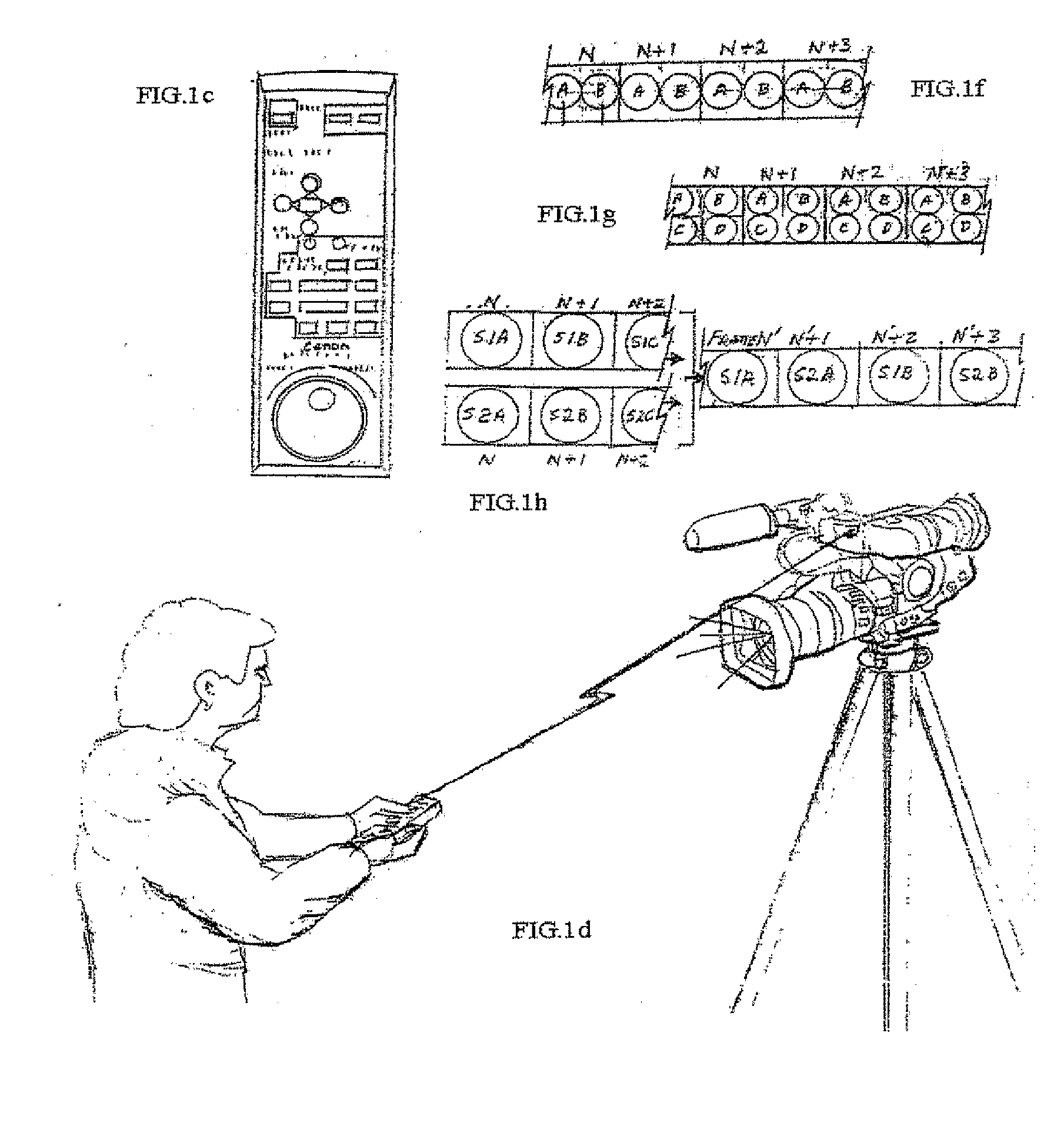Panoramic image-based virtual reality/telepresence audio-visual system and method
a technology of audio-visual system and panoramic image, applied in the field of panoramic image-based virtual reality/telepresence audio-visual system and method, can solve the problems of low resolution image scene, limitation compounded further, and the conventional camcorder is not tailored to recording panoramic image, so as to facilitate wireless transmission and facilitate incorporation. easy and cost-effective
- Summary
- Abstract
- Description
- Claims
- Application Information
AI Technical Summary
Benefits of technology
Problems solved by technology
Method used
Image
Examples
second embodiment
[0202] the present invention will be described with reference to FIG. x. In an IL-CCD, it is possible to obtain video information of field accumulation without mixing the signal charges from two adjacent photoelectric converting elements as is done in the case of the foregoing embodiment. The principle is described referring to FIGS. x and x. FIG. x shows the pulse (VBLK) representing the vertical blanking period, the field pulse emitted from the synchronizing signal generator 4 shown in FIG. x, the signal readout timing of the IL-CCD, the driving timing of the liquid crystal shutters, the potential change in the photoelectric converting element at point Z, and the output signal from the imaging device.
[0203] The following describes the operation. During the first field, the signal readout pulse .phi.CH is applied to .phi.V3 to transfer the signal charges generated at the photoelectric converting element 42 to the vertical transfer stage. The signal charges are then transferred at h...
first embodiment
[0306] For example, and now referring to the drawings in more detail, FIG. 19 and FIG. 37 is a perspective drawing of a personal communication system 120 or 122 comprising a head-mounted wireless panoramic communication system according to the present invention. This first embodiment of the personal communication system includes a camera system comprising objective lenses, relay optics, focusing lenses, shutters, and imaging sensor means. FIG. 36a through FIG. 36i is a schematic diagram comprising nine drawings that can be placed next to one another to describe all major embodiments of the present invention and will be referenced throughout the detailed description. A legend of how the images fit together can be found on the bottom left corner of FIG. 36a.
[0307] Referring to embodiment A of FIG. 19 and FIG. 37, shown in FIG. 20, FIG. 21, FIG. 27, and FIG. 36a, the objective lenses and associated objective relay or focusing lenses transmit images representing the environment surroun...
PUM
 Login to View More
Login to View More Abstract
Description
Claims
Application Information
 Login to View More
Login to View More - R&D
- Intellectual Property
- Life Sciences
- Materials
- Tech Scout
- Unparalleled Data Quality
- Higher Quality Content
- 60% Fewer Hallucinations
Browse by: Latest US Patents, China's latest patents, Technical Efficacy Thesaurus, Application Domain, Technology Topic, Popular Technical Reports.
© 2025 PatSnap. All rights reserved.Legal|Privacy policy|Modern Slavery Act Transparency Statement|Sitemap|About US| Contact US: help@patsnap.com



